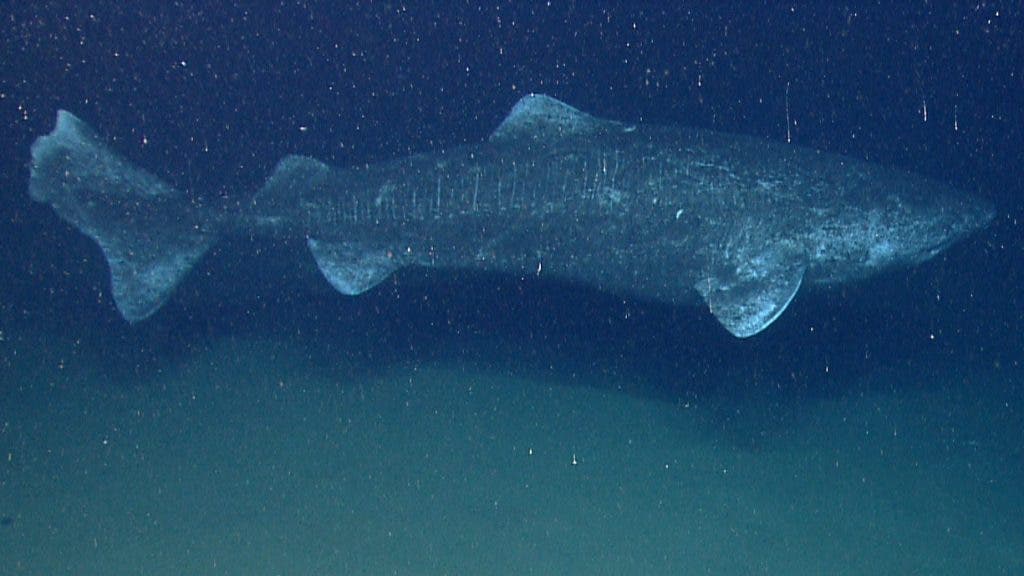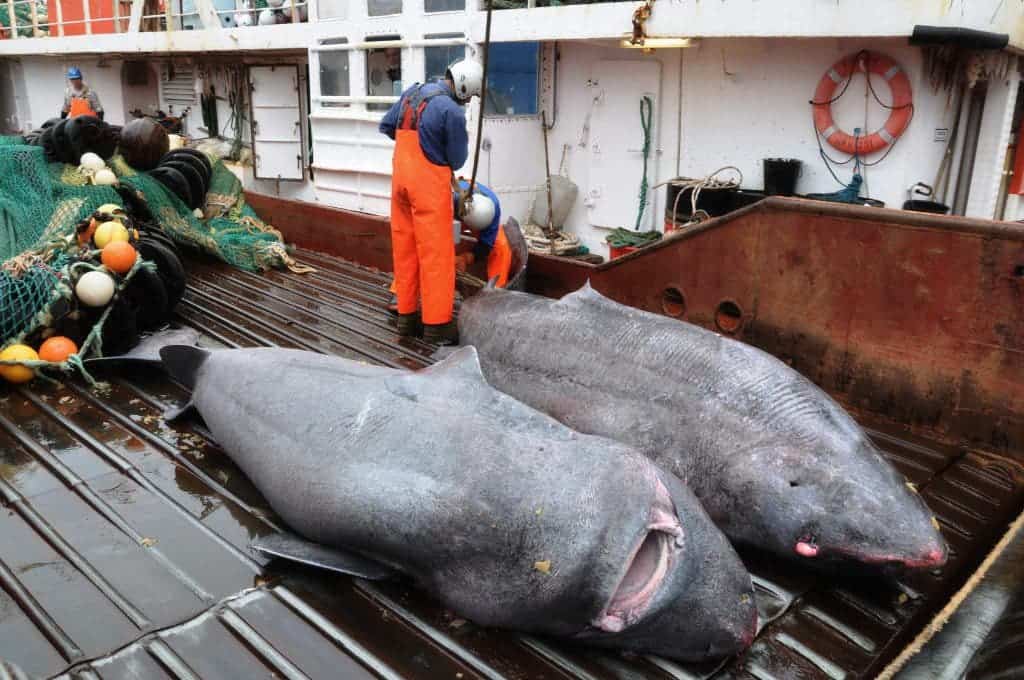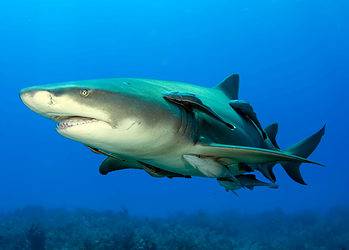
A massive shark that can grow up to 20 feet long and lurks beneath the chilling waters of the sub-Arctic ocean might be the longest living vertebrate. Scientists say the Greenland shark could easily live to 400 years old, or more than twice as much as Jonathan, a Seychelles giant tortoise from the island of Saint Helena, which holds the record for the oldest terrestrial animal at 183 years of age.
A giant that lurks beneath the ocean
Julius Nielsen, a marine biologist at the University of Copenhagen, estimates the oldest of the Greenland Sharks freely swimming in the open ocean might be anywhere between 272 and 512 years old. Despite the broad range, even the lowest estimate clearly positions the shark as the most longevic vertebrate.
Though very large, rivaling the Great White in size, and known to eat animals like the polar bear, horse, moose, and reindeer these venerable sea beasts are quite non-aggressive and harmless to humans — unless you eat them. And because of its range and habitat, the Greenland shark is still a mysterious species for scientists. Of the 465 known species of sharks, only eight live in the Arctic, among them the Greenland shark which can grow to 6.5 meters (21 feet) in length and reach 900 kilos in weight. That makes it the biggest fish in the Arctic.
[ALSO SEE] World’s tiniest vertebrate
The sluggish Greenland Sharks can rarely be spotted, often choosing to live in deep waters, often as deep as 400-600 meters below the water’s surface. Which is why Nielsen and colleagues had to rely on specimens retrieved as by-catch in fishing expeditions. Fishermen don’t actively pursue the Greenland Sharks but catch them by mistake while setting their nets for more agreeable prey like cod or trout. They have a good reason, too — the Greenland Shark’s flesh is packed with toxins and eating it is considered highly poisonous.
The team managed to retrieve 28 female sharks measuring 31 in. to 16.4 ft. (81 cm to 502 cm). Typically, to determine the age of fish scientists study the growth bands in a calcified tissue located in the ear called the otolith, sort of like measuring the rings of a tree trunk to see how old it is. Since sharks don’t have this tissue, the researchers turned to a very unconventional proxy: the lenses of their eyes.
Eyeing the oldest vertebrate

Shark lenses are formed in the uterus, which means whatever the shark mother ate made its way into the offspring. This means that by measuring the radiocarbon isotopes found in the core lens, we can determine what the environment was like before a shark was born and, hence, its age. For instance, the late 1950s saw thousands of atomic bomb tests which caused a spike in the amount of radiocarbon that eventually made its way into the sea — this is known as the ‘bomb pulse’. If a shark had high levels of Carbon-14 in its core lens, on par with bomb pulse readings, it clearly means the animal is at least 60 years old.
In our case, two of the smallest sharks had a post-bomb pulse isotopic reading making them at most 50 years or younger. The third smallest shark though had radiocarbon levels right at the onset of the bomb, making it 60 years old. The rest of the 25 sharks all had pre-bomb pulse readings suggesting they were all at least 60 years old.
By comparing these readings with known levels of radiocarbon in the ocean from various years published in a database, scientists could then estimate the age of the sharks. To make the estimates a bit better, the researchers also assumed that the larger the shark the older it was. When this was factored in, they found that the largest shark they studied, a 16-foot specimen, was about 392 years, give or take 120 years.
Not only is the Greenland shark perhaps the longest-living vertebrate, it might also be a terribly difficult one to breed. Some of the smallest sharks studied measured 31 inches, making them juveniles — at age 50 to 60 years! Since Greenland sharks are known not to reach sexual maturity until they grow to 13 ft. (400 m), this means that this shark would have to wait for around 150 years before it’s ready to become a parent. Clearly, that makes them very vulnerable to extinction. Luckily they’re poisonous and smell really, really bad — this makes them very uninteresting for humans. Maybe they’re lucky.
“Greenland sharks are among the largest carnivorous sharks on the planet, and their role as an apex predator in the Arctic ecosystem is totally overlooked. By the thousands, they accidentally end up as by-catch across the North Atlantic and I hope that our studies can help to bring a greater focus on the Greenland shark in the future,” Nielsen said.
The groundbreaking paper was published in the journal Science.






